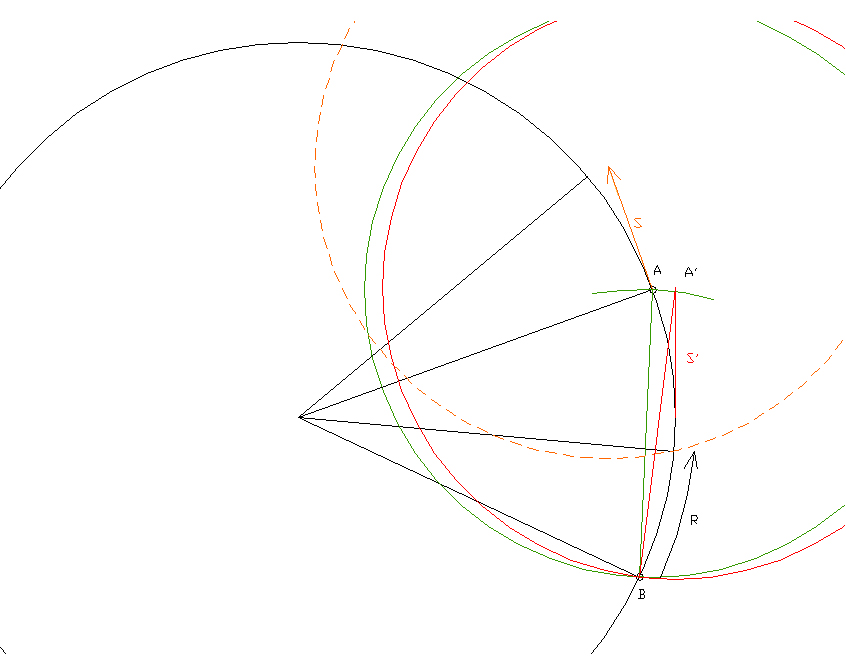Chapter 2
2. Distances in the universe.
2.1. Redshift without increasing the distance between a light source and an observer.
In science, Redshift stands for increasing the distance and an expanding universe. By increasing distance between an observer and a light source, the observer experiences an increasing wavelength. A sort of Doppler effect.

Image 4. Redshift in the eyes of the observer.
The opposite is the blueshift by decreasing distances. With the concept of Redshift/blueshift the speed at which the distance increases or decreases can be calculated. This phenomenon is used to understand the universe and its measurements.
When using speed and direction as tools to understand movements in the universe, it turns out that Redshift not necessarily means an increasing distance between a light source(object) and an observer. Redshift can also indicate that there is movement, a rotational movement.
The following explanation tells why Redshift has a broader meaning.
When observing a lamp we experience light from all directions. Light can fill the whole room. Stars in the universe are like lights, they also shine in all directions. With this in mind, we create an imaginable image.
Image 3 showed in circles departing light waves. You can make this image into a three-dimensional image where arrows show directions that waves travel. Of course, all directions couldn’t be visualized in the image.
Note: A ‘moment in time’ is an unnoticeable part of every equation calculating change, no matter the form of change. There has to be a beginning, a start point!
Image(Animation) 5. The radius of the sphere represents the past time at a certain speed. Light waves are travelling at light speed related to the speed and direction that the source had at the time of the departure.
The sphere represents the absolute light speed, the movement of the sphere represents the relative movement. Changing directions of the light source afterwards become irrelevant. With this approach, there is no need to determine upfront which light wave will reach the observer and it makes the relative origin of a wave visible. It is the observer who detects from which direction light waves come.
The following drawings show why Redshift not only occurs when the distance between a light source and an observer increases.
Image(Animation) 6. Redshift occurs when the light source and observer are rotating. The red circle is the projected circle of the banded circle. It shows the difference caused by the rotation.
Image(Animation) 6. shows a black circle that represents the mutual rotation of a light source A and an observer B. The radius of the green circle equals the distance between A and B. The red circle represents the light waves that in one moment departed from light source A. Due to the rotating movement of the light source, the red circle is moving away from observer B. The arrow S shows the speed, S’ shows its projection. Therefore it takes longer for a light wave to reach observer B.
For observer B the speed of the light wave has decreased a fraction. Also, the direction in which observer B experiences the light wave has changed. Because the red circle moves in one direction away, the distance between A’ and B shows an increase of the radius, meaning an increase of time.
Light waves travelling directly from A to B would indicate that the light waves had to travel in a curve and not in a single direction or straight line. A and B are rotating so constantly changing directions.
Every light wave that departs A and reaches B travels the same distance, so the observer experiences a Redshift. Light source A is not moving away from observer B.
When the distance between A and B is doubled the Redshift is also doubled because the rotation distance will double.
The Redshift just explained, has different characteristics compared to the Redshift that occurs when light source and observer do increase the distance to each other.
The Redshift explained in Image 6 keeps the same wave frequency as if there were no Redshift. This characteristic also can be explained by the drawings. Later a more extensive explanation at 2.2. Redshift and frequency.
First, an explanation of why we do not observe Redshift on earth although the earth is rotating. One could say: It’s a matter of perspective.
Image 7. A little bit closer.
A close up to show things more clear. Why don’t we see redshift on our rotating planet?
It all has to do with speed in relation to distance.
On could take for example the earth as the rotating circle. We know the circumference of the earth approximately 40.000 kilometres and we know the earth rotates in 24 hours on its axis. This means the rotation speed is 40.000 kilometres divided by 24 hours resulting in a speed of approximately 1667 kilometres per hour.
The light speed is rounded 300.000 kilometres per second what means 1080000000 kilometres per hour. The rotation distance as drawn above would be 2000 kilometres. The earth would take for that distance 1 hour and 12 minutes, but the light takes only 6,66 milliseconds.
In 6,66 milliseconds the earth rotates about 3 metres. That means a part of 3 metres from a circumference of 40000000 metres. This little part is practically straight and has no noticeable bend.
The concept of “inertial frames” by Albert Einstein doesn’t apply anymore. When distances in relation to light speed are very small, the effects of Redshift are insignificant as the example shows.
In the universe, the relation between light speed and distances (light years) is completely different.
Image 6 and 7 also reveal another thing. It’s the frequency of the waves that are reaching the observer. The frequency in which the waves depart is also the frequency in which the waves reach the observer. The distance every wave has travelled is equal. The waves only took a little bit longer causing a Redshift.

Image 8 + Animation. Redshift where this time the frequency is unchanged. Every wave travelled the same distance and therefore the frequency should be unchanged.
Note. When busses leave a bus station at a regular interval they arrive at the same interval at the next bus station, when driving at the same speed. The speed itself doesn’t matter.
The drawings also show that light waves aren’t attached to each other in continuous strings. During the rotation, every imaginable sphere with light waves in all directions is changing a little in direction. It may be a tiny bit, but over light-years it is noticeable. So light waves can only be single waves that travel independently. See image 9.
Science struggled with the idea that Redshift could occur while the frequency remained unchanged. They presumed that Redshift meant increasing distance.
Taking the frequency as time and wavelength for speed created a discrepancy. One or the other has to bend in the mind of a scientist.
Taking light speed as a constant meant that time had to bend. There is a logic in the though when the idea is that Redshift indicates an increase of distance. It also explains the connection of time and space in a time-space continuum. It’s not entirely strange to think this way.
But measurements only do not always give the whole picture.
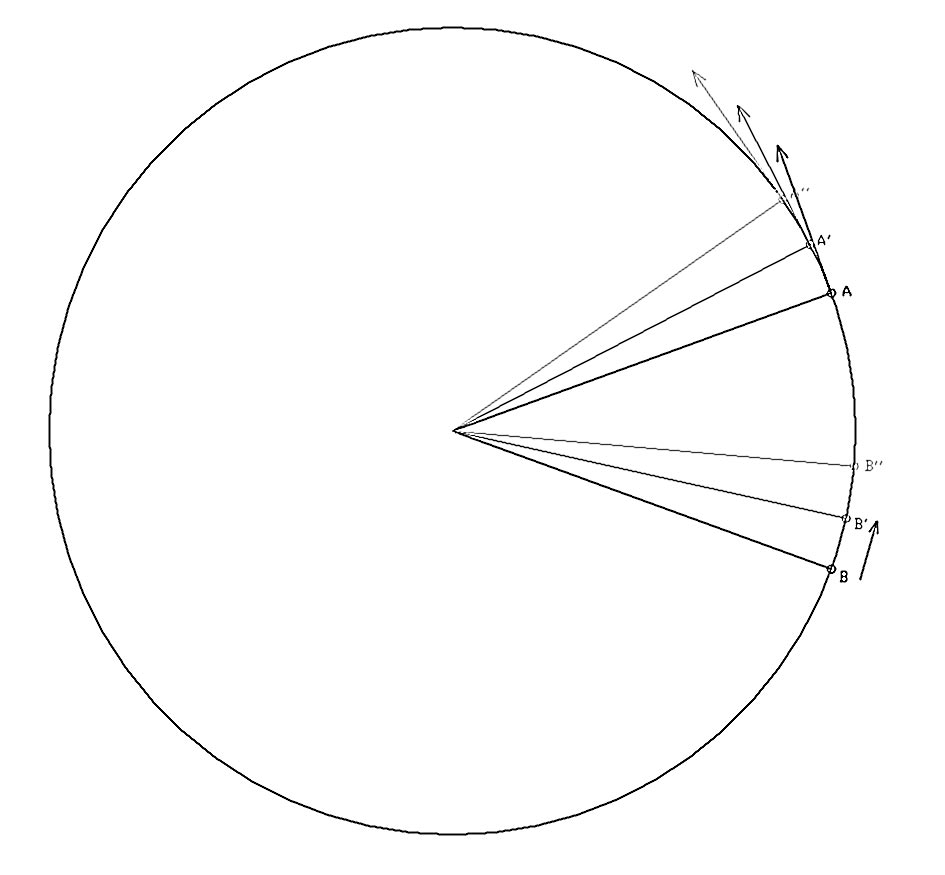
Image 9. Rotation, frequency and changing direction. During the rotation observer B, B’, B’’ conceives light waves from A, A’, A’’.
Image+Animation 9. Rotation, frequency and changing direction, show that the light source and observer are continuous in a rotational movement. Every light wave that reaches the observer comes from a different direction. The observer doesn’t notice this change of direction he is also changing direction.
Light waves reach the observer as many single waves. This can explain why light waves also behave like particles.
2.3. Different observations of the same light source due to different viewing directions.
On the basis of image 6 there is more to tell which relates to orientation. Observer B looks in the direction of the rotation. There is of course the possibility that the observer looks from the same distance in the opposite direction when he observes A’.
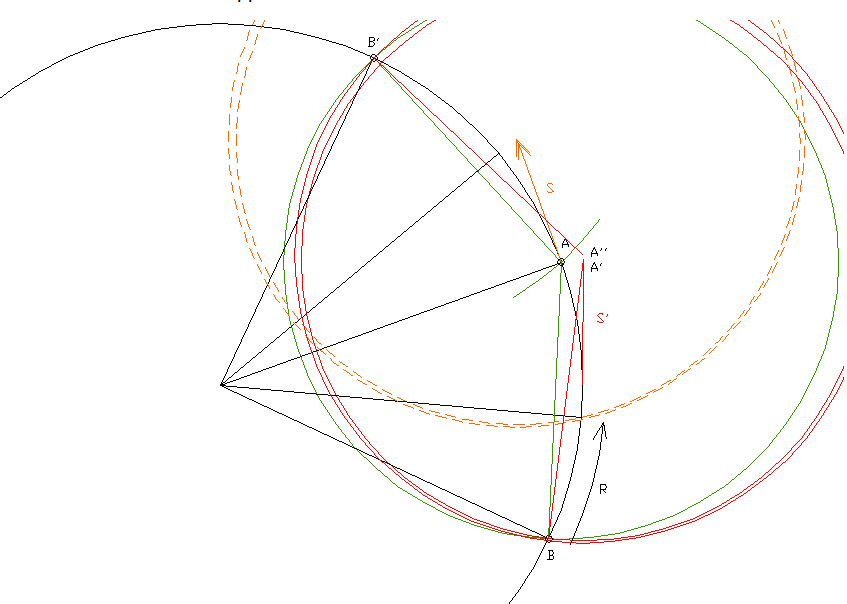
Image+animation 10. Rotation – orientation
Image+animation 10 clearly shows that the observations from B and B’ of light source A’ are different. Observer B’ experiences a bigger Redshift then observer B. The red circle has to expand a little more to reach observer B’ and A’ becomes A’’.
The light source A has always been the same. The difference observed, has to do with the path the light has travelled. The light travelled in a straight line but from a different direction.
Observing differences when looking at a star in space, caused by the angle of observation doesn’t mean the star is responsible. The rotation has an effect on this matter. The observations we make in space are by light not by matter.
Observing a star from earth means observing a star rotating in the Milky Way, the same Milky Way in which we ourselves are rotating. There is the factor of the rotation looking at space.
Observer and light source doesn’t need to be at the same radius to experience Redshift. The greater the distance the greater the Redshift. The rotation only has to have the same centre. Unfortunately, the glove doesn’t fit exactly. The following images will reveal an irregularity.

Image 11. On some occasions, the redshift doesn’t occur despite the rotation.
Image 11 shows that the angle of observing the light source has changed and also a shift in observed wavelength. It is a blueshift.
However, when the distance between the light source and the observer increases, the Redshift immediately takes over. Image 12 will show.
When the observer observes the light source against the rotational direction there will be a Redshift. Image 13 will show.
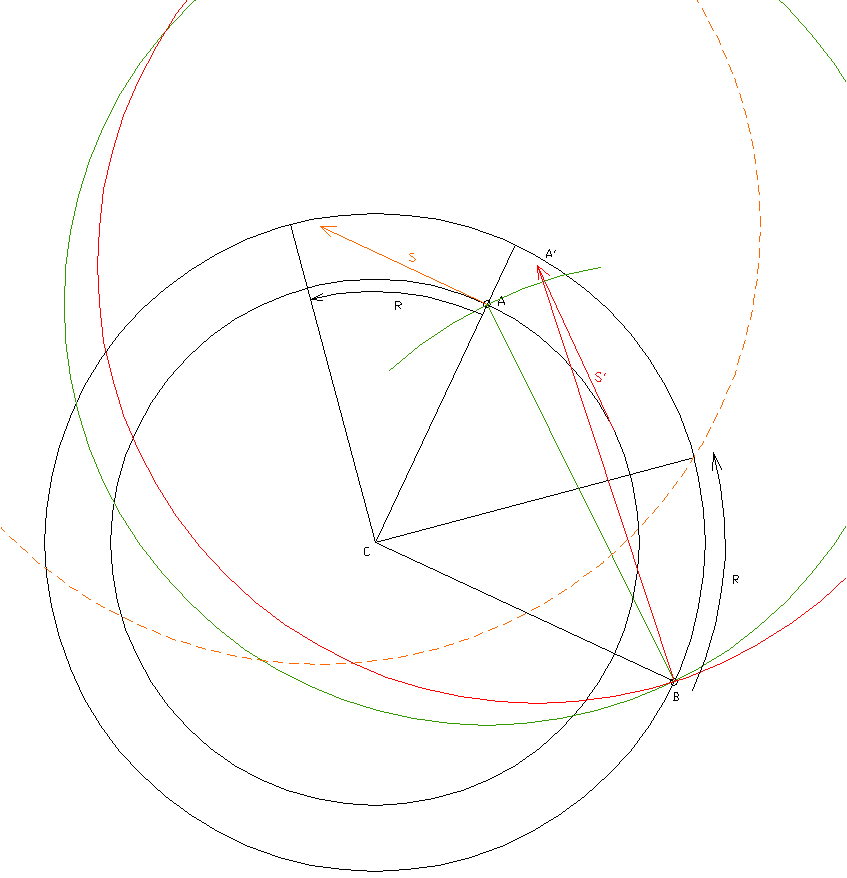
Image 12. Increasing distance between A and B shows the Redshift that image 11 hadn’t.
By increasing the distance between A and B the Redshift increases. It makes clear that Redshift is a bad indicator of distance. Image 13 will confirm that even more.
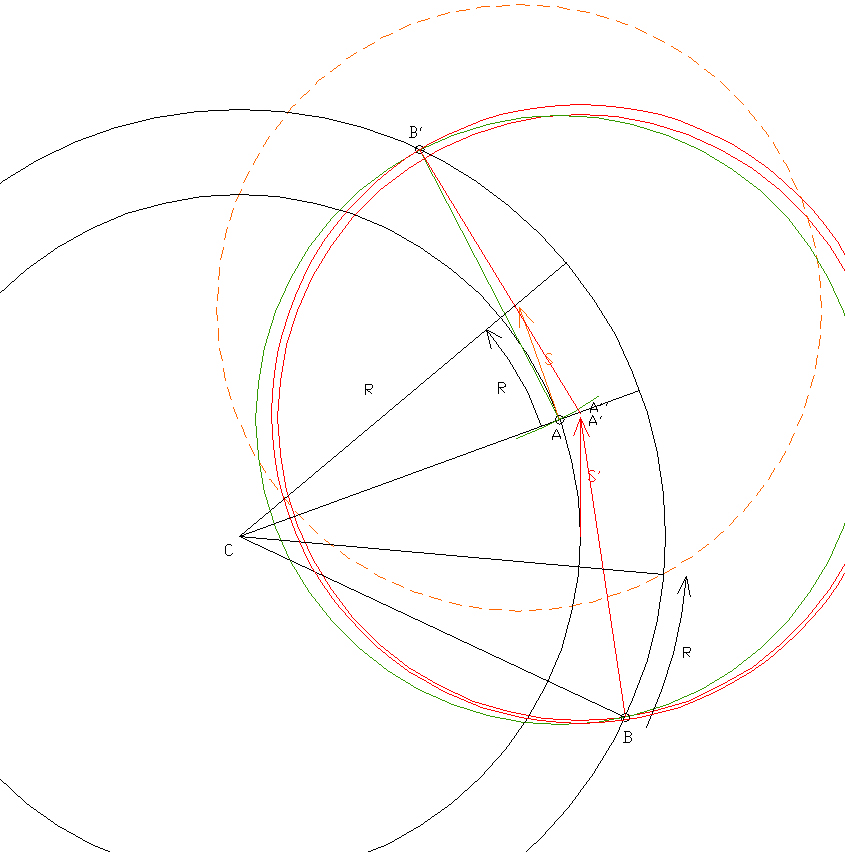
Image 13. A different angle gives a different observation.
Image 13 shows the same situation as image 11. The main difference is that observer B’ observes A from the other side. Unlike B he experiences a Redshift watching the light source. As mentioned before light source A has nothing to do with this experience.
The situation in image 13 compares to the situation in image 10. In both images, observer-B sees light source A in a different way.
It isn’t strange that scientists were puzzled by the observations they made at the start of the previous century.
2.4. The effect of rotation in the observation of the universe.
The image of the universe we created is by observation. The light spectrum has a big role in it. Redshift can be measured by the light spectrum. The light spectrum, Redshift and gravitation are major tools in determining the dynamics of the universe.
When Redshift can’t be defined as before, it would mean that the image of the dynamics of the universe should be adjusted.
Rotation can be the cause of observing Redshift. So Redshift can also be an indicator of rotating movements, and not always stands for expansion.
When masses in the universe rotate, which is the case in most instances Redshift is inevitable. It would be very strange if the was no Redshift.
Different measurements of an object from different angles are inevitable too when there is rotation.
2.5. Redshift an inevitability.
When looking around in our surrounding world the rotation of things is most common. Rotation is seen in the smallest of things, but also on a bigger scale, a lot of rotation is found. We on earth are in several rotational movements. Around the axis of our planet, around the sun, around the centre of the Milky way and not unthinkable in another rotating movement. Earlier paragraphs show that Redshift should occur when there is rotation on a big scale.
Therefore Redshift is inevitable and most logic. It would be alarming when Blueshift was predominantly found, and as commonly known this is not the case.
A question comes to mind, “Why are most things in the universe rotating?”
2.6. The origin of the universe?
The Big Bang theory seeks to explain the origin of the universe. The big Bang theory relates to the Hubble constant which presumes an isotropic expansion of the universe. The theory of relativity plays also a big part in the theory.
It all is losing its basis when the concept of Redshift changes, …and when observations do not match the theory.
There is a question to be asked. Can the small universe surround the big universe without stretching in the observation? Observing space means observing space in all directions. Can looking back in time mean looking at a smaller universe? See 3.2.
What should we believe, astronomical observations or theoretical theories?
Speed in general can’t be taken as a constant due to its variable direction. We observe our surrounding universe in all directions. Direction plays the main part in our orientation.
Can it be possible that our universe has no origin, the time has no beginning and space is limitless. For human understanding, it may be unintelligible.

